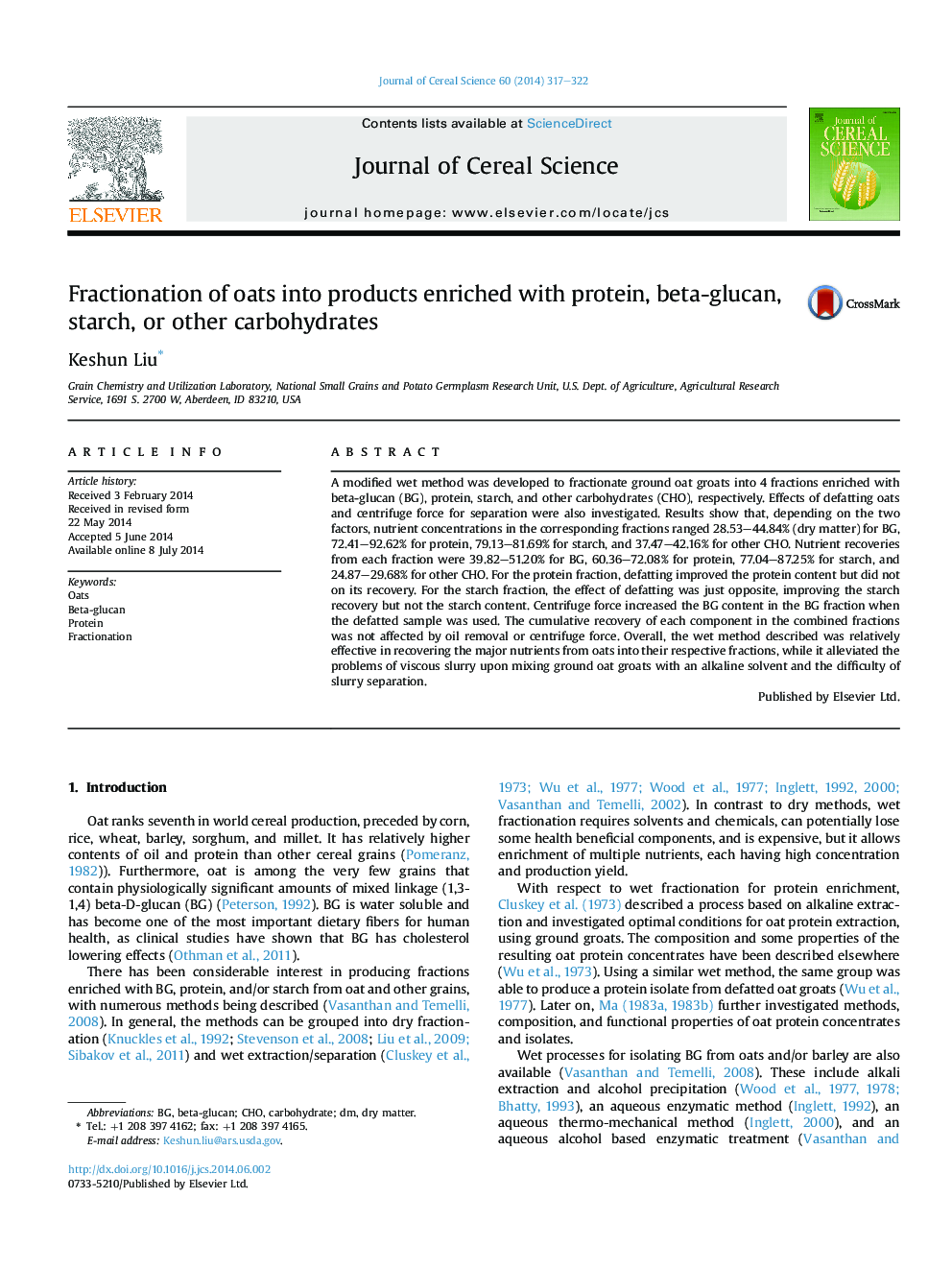| Article ID | Journal | Published Year | Pages | File Type |
|---|---|---|---|---|
| 4515844 | Journal of Cereal Science | 2014 | 6 Pages |
•Describe a modified wet method to fractionate oats into value-added fractions enriched with each of major nutrients.•The method can achieve high concentration and high recovery of nutrients in their respective fractions.•Using double solvents alleviates the problem of viscous slurry upon mixing ground oat groats with an alkaline solvent.•Defatting oats significantly affects nutrient concentration and recovery.
A modified wet method was developed to fractionate ground oat groats into 4 fractions enriched with beta-glucan (BG), protein, starch, and other carbohydrates (CHO), respectively. Effects of defatting oats and centrifuge force for separation were also investigated. Results show that, depending on the two factors, nutrient concentrations in the corresponding fractions ranged 28.53–44.84% (dry matter) for BG, 72.41–92.62% for protein, 79.13–81.69% for starch, and 37.47–42.16% for other CHO. Nutrient recoveries from each fraction were 39.82–51.20% for BG, 60.36–72.08% for protein, 77.04–87.25% for starch, and 24.87–29.68% for other CHO. For the protein fraction, defatting improved the protein content but did not on its recovery. For the starch fraction, the effect of defatting was just opposite, improving the starch recovery but not the starch content. Centrifuge force increased the BG content in the BG fraction when the defatted sample was used. The cumulative recovery of each component in the combined fractions was not affected by oil removal or centrifuge force. Overall, the wet method described was relatively effective in recovering the major nutrients from oats into their respective fractions, while it alleviated the problems of viscous slurry upon mixing ground oat groats with an alkaline solvent and the difficulty of slurry separation.
